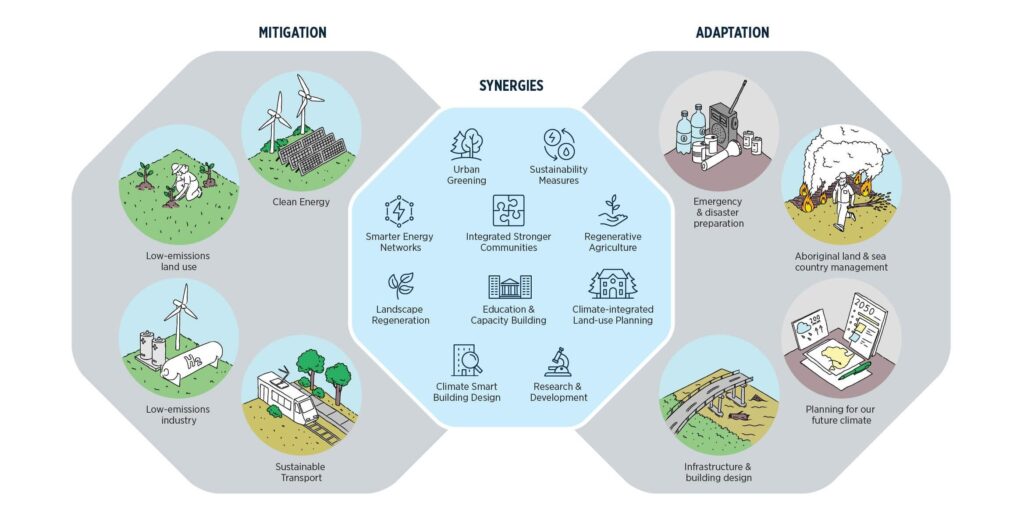Introduction:
As the climate continues to shift in unpredictable ways, scientists and policymakers are faced with a critical inquiry: how well can human and natural systems adjust to the ongoing repercussions of climate change? A recent investigation published in the journal Nature sheds light on the intricate challenges and uncertainties associated with this vital question, emphasizing that forecasting adaptability is a daunting task. With communities around the globe experiencing escalating temperatures, severe weather phenomena, and transforming ecosystems, it has become increasingly important to comprehend what drives resilience and adaptability. This article examines the study’s conclusions while discussing their implications for future climate action strategies and highlighting the urgent need for innovative methods to bolster adaptability in an uncertain environment.
Navigating the Complexities of Climate Adaptation Strategies
The development of climate adaptation strategies is becoming central to our response against climate change. However, their success is often clouded by uncertainty stemming from various factors such as socio-economic conditions, political commitment, and unpredictable climatic impacts. The challenge lies in customizing solutions for specific local contexts while ensuring they remain adaptable enough for future changes. As communities endeavor to implement adaptive measures, they encounter several obstacles including:
- Diverse Data Sources: Variability among climate models leads to differing risk assessments.
- Resource Constraints: Numerous regions lack adequate financial backing or skilled personnel necessary for effective adaptation implementation.
- Engagement of Stakeholders: Involving diverse stakeholders is essential but can complicate decision-making processes.
The unpredictable nature of climate change necessitates that adaptation strategies not only tackle existing vulnerabilities but also foresee potential future risks. This requires an ongoing cycle of evaluation and modification; thus it becomes crucial for policymakers to integrate adaptive management practices into their planning frameworks. Establishing coordinated responses across sectors can enhance successful implementation of these measures significantly. The table below outlines key focus areas essential for effective climate adaptation:
| Focus Area | Key Considerations |
|---|---|
| Infrastructure Development | Adequate resilience against flooding events, storm surges, and extreme heat. |
| Public Health Initiatives | Tackling heat-related illnesses and diseases spread by vectors. |
The Significance of Local Insight in Assessing Adaptability to Climate Change
The insights derived from local knowledge are invaluable when evaluating how communities will respond to evolving challenges posed by climate change. In numerous areas worldwide, indigenous practices combined with traditional ecological wisdom have been refined over generations—providing unique perspectives on environmental shifts as well as resource management techniques. These community-driven approaches typically encompass:
- Ecosystem Observations: Indigenous populations often possess keen awareness regarding changes within local flora and fauna which aids sustainable harvesting practices.
- Coping Mechanisms: Communities frequently devise innovative solutions such as modified planting schedules or advanced water management techniques tailored specifically for extreme weather scenarios.
- Cohesion Among Community Members:The sharing of indigenous knowledge strengthens relationships within communities thereby enhancing collective resilience against climatic adversities.
Additionally, research indicates that merging local insights with scientific data provides a more holistic understanding regarding community adaptability levels. Recent initiatives underscore participatory methodologies that prioritize community involvement during decision-making processes—this collaboration may take various forms including:
| >Integration Method<< / th >> << th >>Description<< / th >> << / tr >> << /thead>> < |
|---|
| Resource Type | Description | Contact | |||
|---|---|---|---|---|---|
| Local Climate Council | Provides guidance concerning sustainability practices | ||||
| | < | ||||
Conclusion: Emphasizing Collaborative Efforts Towards Resilience Building’
‘While urgency surrounding tackling global warming escalates,’ predicting both human/natural system adaptabilities remains riddled uncertainties.’ As underscored recent findings,’ complex interplay biological/social/technological elements complicates understanding species/community responses shifting environmental conditions.’ Policymakers/scientists/community members must stay vigilant/proactive recognizing flexibility innovation paramount navigating unpredictable dynamics ahead.’ Moving forward demands collaborative endeavors building resilient frameworks ensuring nature/humanity alike adapt forthcoming challenges.’ Lessons gleaned past adaptations may provide crucial guidance traversing unprecedented transformation era ahead.’
